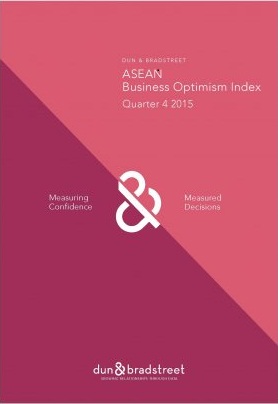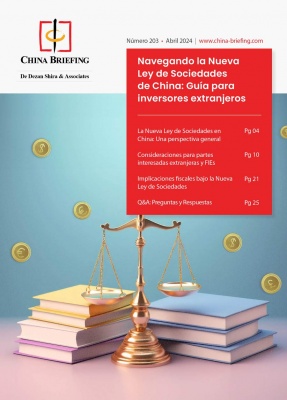The Lancang-Mekong River Cooperation Dialogues – China Strengthens Ties with Vietnam
China is looking to strengthen business and trade with Vietnam. On October 22, a delegation of Chinese entrepreneurs met in Vietnam to discuss the proposed Lancang-Mekong River Alliance. The head of the delegation, China’s former Cambodia Ambassador, announced that the first Foreign Ministers’ meeting on the Lancang–Mekong River dialogue mechanism will be held this November in Yunnan.
Li Yalin, Deputy General Manager of ICBC, also spoke at the forum about strengthening service industries in Vietnam, particularly garments and textiles. Having just joined the Trans-Pacific Parntership (TPP), Vietnam’s booming textiles and garment manufacturing industries are set to benefit the most from the agreement. Yalin added that many Chinese textile and garment companies have started operating in Vietnam within the last year.
The mechanism – a community of six countries of China, Myanmar, Laos, Thailand, Cambodia, Vietnam joined by the Mekong River – will facilitate business coordination and reinforce infrastructure for the Silk Road Economic Belt and the Maritime Silk Road; key components of China’s ‘One Belt One Road’ initiative. It also serves to promote integration of the Association of Southeast Asian Nations (ASEAN). Senior officials of these countries met for the first time in April this year in Beijing.
Vietnamese business
Vietnam has been showing positive business trends in the last year, with Dun & Bradstreets’s Business Optimism Index indicating that the Vietnamese manufacturing and service sectors maintain high optimism levels. In particular, the textiles and footwear industries are proving to be the most successful in Vietnam due to low wage costs and improving infrastructure.
Vietnam has been largely dependent on China in recent years, with three quarters of its annual trade made up of imports from its neighbor.
China’s intent
Following numerous disputes with China in the South China Sea, Vietnam has sought to deepen its cooperation with other countries, including Japan, the U.S. and the Philippines. Vietnam is also set to benefit significantly from the Trans Pacific Partnership (TPP) deal, a partnering of 12 Pacific Rim countries exclusive of China.
With many other countries rushing to invest in ASEAN, China wishes to maintain its position as a leading trading partner of the region, and despite territorial disputes with Vietnam, hopes to improve trade and business with its neighbor. China’s focus on Vietnam during the Lancang-Mekong River dialogues can be interpreted as a bid to further strengthen ties: China has drawn attention to trust, cooperation and friendship made possible through the Lancang-Mekong River Community.
 The Business Optimism Index, released every quarter by Dun & Bradstreet, is considered a leading economic indicator for turning points in business activity and measuring business sentiment. The Index captures business expectations for the quarter ahead based on six parameters: sales volume, net profit, selling price, new orders, inventory, and employment. Sampling in the Index represents key business sectors including manufacturing, construction, wholesale, transportation, services, finance, mining and agriculture, according to their GDP contribution in each nation. The Business Optimism Index, released every quarter by Dun & Bradstreet, is considered a leading economic indicator for turning points in business activity and measuring business sentiment. The Index captures business expectations for the quarter ahead based on six parameters: sales volume, net profit, selling price, new orders, inventory, and employment. Sampling in the Index represents key business sectors including manufacturing, construction, wholesale, transportation, services, finance, mining and agriculture, according to their GDP contribution in each nation.
The ASEAN Business Optimism Index for Q4 2015 is out now and available as a complimentary download in the Asia Briefing Bookstore. |
![]()
 Selling, Sourcing and E-Commerce in China 2016 (First Edition)
Selling, Sourcing and E-Commerce in China 2016 (First Edition)
This guide, produced in collaboration with the experts at Dezan Shira & Associates, provides a comprehensive analysis of all these aspects of commerce in China. It discusses how foreign companies can best go about sourcing products from China; how foreign retailers can set up operations on the ground to sell directly to the country’s massive consumer class; and finally details how foreign enterprises can access China’s lucrative yet ostensibly complex e-commerce market.
Using China’s Free Trade & Double Tax Agreements
In this issue of China Briefing, we examine the role of Free Trade Agreements and the various regional blocs that China is either a member of or considering becoming so, as well as how these can be of significance to your China business. We also examine the role of Double Tax Treaties, provide a list of active agreements, and explain how to obtain the tax minimization benefits on offer.
 Double Taxation Avoidance in China: A Business Intelligence Primer
Double Taxation Avoidance in China: A Business Intelligence Primer
In our twenty-two years of experience in facilitating foreign investment into Asia, Dezan Shira & Associates has witnessed first-hand the development of China’s double taxation avoidance mechanism and established an extensive library of resources for helping foreign investors obtain DTA benefits. In this issue of China Briefing Magazine, we are proud to present the distillation of this knowledge in the form of a business intelligence primer to DTAs in China.
- Previous Article China Outbound: Understanding Special Economic Zones and HR Rules in ASEAN Countries
- Next Article Dal bollettino legale: procedure semplificate per pre-approvazione del nome societario, livelli minimi salariali 2015 della città di Hangzhou

























